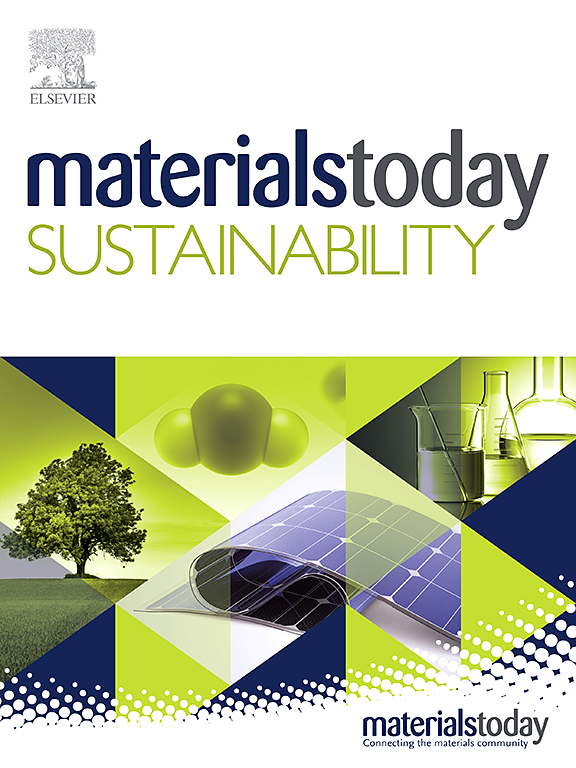Cutting tests and performance evaluation of recycled PET in fused filament fabrication
IF 7.9
3区 材料科学
Q1 GREEN & SUSTAINABLE SCIENCE & TECHNOLOGY
引用次数: 0
Abstract
Fused Deposition Modelling (FDM) technology in 3D printing offers numerous advantages, such as cost-effectiveness, ease of use, and the ability to produce complex geometries with minimal material waste; however, surface quality remains a significant challenge. This study investigates how the hardness and melt flow properties of the raw material affect surface roughness and how this can be improved by post-machining. Modified recycled poly(ethylene terephthalate) (RPET) was used as the raw material in the experiments, considering aspects of the circular economy. The material properties were adjusted by varying the ratio of ethylene-butyl-acrylate-glycidyl-methacrylate (EBA-GMA) additive. It was demonstrated that a decrease in the melt flow rate (MFR) results in more uniform deposited layers, leading to smoother surfaces. By systematically varying turning parameters and applying statistical analysis, it was shown that feed rate has the most significant impact on surface roughness. Using a feed rate of 0.1 mm/rev reduced the average surface roughness from 13–25 μm to 2–4 μm. Scanning electron microscopy (SEM) revealed that the surface characteristics after post-processing were minimally influenced by material hardness. This suggests that the findings are likely applicable to 3D printing with other plastics as well.

熔融长丝加工中再生PET的切削试验及性能评价
3D打印中的熔融沉积建模(FDM)技术具有许多优点,例如成本效益,易用性以及以最小的材料浪费生产复杂几何形状的能力;然而,表面质量仍然是一个重大挑战。本研究探讨了原材料的硬度和熔体流动特性如何影响表面粗糙度,以及如何通过后加工来改善表面粗糙度。从循环经济的角度出发,以改性再生聚对苯二甲酸乙酯(RPET)为原料进行实验。通过改变乙烯-丙烯酸丁酯-甲基丙烯酸缩水甘油酯(EBA-GMA)添加剂的比例来调节材料的性能。结果表明,熔体流动速率(MFR)的降低导致沉积层更均匀,表面更光滑。通过系统地改变车削参数并进行统计分析,表明进给量对表面粗糙度的影响最为显著。当进料速度为0.1 mm/rev时,平均表面粗糙度从13-25 μm降低到2-4 μm。扫描电镜(SEM)显示,后处理后的表面特性受材料硬度的影响最小。这表明,这些发现可能也适用于其他塑料的3D打印。
本文章由计算机程序翻译,如有差异,请以英文原文为准。
求助全文
约1分钟内获得全文
求助全文
来源期刊

Materials Today Sustainability
Multiple-
CiteScore
5.80
自引率
6.40%
发文量
174
审稿时长
32 days
期刊介绍:
Materials Today Sustainability is a multi-disciplinary journal covering all aspects of sustainability through materials science.
With a rapidly increasing population with growing demands, materials science has emerged as a critical discipline toward protecting of the environment and ensuring the long term survival of future generations.
 求助内容:
求助内容: 应助结果提醒方式:
应助结果提醒方式:


